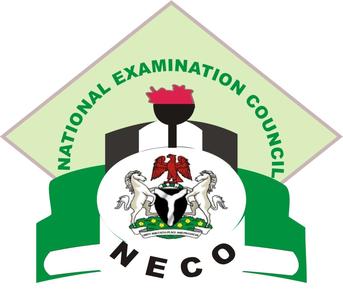
*Biology-Obj!*
01-10: BBEDACCAEE
11-20: DDCEABDAEC
21-30: EBBBEADBDD
31-40: EDACCCBCEA
41-50: EBBCACBAEC
51-60: DDABBDDDBE
COMPLETED
*NECO BIOLOGY SOLUTIONS*
===================================
“`INSTRUCTION; ANSWER THREE(3) QUESTIONS ONLY“`
(1ai)
The cell theory states that:
– All living organisms are made up of one or more cells.
– The cell is the basic unit of life.
– All cells arise from pre-existing cells.
(1aii)
– Robert Hooke, who discovered cells in 1665 and coined the term “cell”.
– Matthias Schleiden and Theodor Schwann, who proposed the cell theory in 1839-1840.
(1bi)
– Large, brightly colored petals that attract insects.
– Nectar-producing glands to feed the insects.
– A strong, sweet fragrance to attract the insects.
– A landing platform for the insects to rest on.
– Pollen that is sticky and easily attaches to the insects.
(1bii)
– Ginger: Rhizome
– Banana: Rhizome
– Sweet potato: Tuber
(1c)
– The mouth mechanically breaks down the bread by chewing and mixes it with saliva, which contains enzymes that begin breaking down the carbohydrates in the bread.
– The esophagus moves the food down to the stomach, where it is mixed with stomach acid and enzymes that further break down the bread.
– The small intestine absorbs the nutrients from the bread, such as carbohydrates, proteins, and fats, into the bloodstream.
– The large intestine absorbs water and electrolytes from the remaining food waste, forming feces.
– The rectum stores feces until they can be eliminated through the anus.
===================================
===================================
(2ai)
Amoeba —> Hydra —> Tilapia —> Toad —> Snake
(2aii)
(i) Small, lightweight seeds that can be easily carried by the wind.
(ii) Hairs or wings on the fruit that increase surface area and help to catch the wind.
(iii) A dry, papery fruit that splits open easily to release the seeds.
(2b)
=Aim:=
To determine if the shoot of a plant is positively phototropic.
=Apparatus:=
A potted plant, a light source, a ruler, a marker.
=Method/Procedure:=
(i) Place the plant in a dark room for 24 hours to ensure that it is not positively or negatively phototropic.
(ii) Place the light source at a fixed distance from the plant, with the light shining directly on the plant’s shoot.
(iii) Turn on the light source and leave it on for 24 hours.
(iv) After 24 hours, measure the distance between the tip of the shoot and the light source.
(v) Mark the new position of the shoot tip on the ruler.
(vi) Repeat the experiment two more times, moving the light source to a different position each time.
=Observation:=
The shoot of the plant will grow towards them light source, bending in the direction of the light.
=Conclusion:=
The shoot of a plant is positively phototropic and grows towards a light source.
(2c)
[TABULATE]
=Aerobic Respiration=
(i) Occurs in the presence of oxygen
(ii) Produces a large amount of ATP
(iii) Carbon dioxide and water are produced as waste products
=Anaerobic Respiration=
(i) Occurs in the absence of oxygen
(ii) Produces a small amount of ATP
(iii) Lactic acid or ethanol is produced as a waste product
===================================
(3ai)
– Rivers
– Lakes
(3aii)
TABULATE
=Complete Metamorphosis=
(i) Four distinct stages: egg, larva, pupa, adult.
(ii) Larva looks completely different from the adult.
=Incomplete Metamorphosis=
(i) Three stages: egg, nymph, adult.
(ii) Nymph looks similar to the adult, just smaller.
(3b)
– Aim: To determine if chlorophyll is necessary for photosynthesis to take place.
– Apparatus: Two plants of the same species, one with leaves covered in aluminum foil, a light source, test tube, water, and a beaker.
– Method/procedure: Place one plant in a dark room and cover its leaves with aluminum foil. Place the other plant in front of a light source. After a few hours, pluck a leaf from each plant and place them in separate test tubes filled with water. Place the test tubes in a beaker and keep them in the dark.
– Observation: After a few hours, observe the test tubes to see which one has produced more oxygen bubbles.
– Conclusion: If the test tube with the leaf from the plant exposed to light produces more oxygen bubbles, then chlorophyll is necessary for photosynthesis to take place.
(3ci)
(i) Overuse of synthetic fertilizers
(ii) Overgrazing
(iii) Deforestation
(iv) Soil erosion
(3cii)
(i) Hearing loss
(ii) Sleep disturbance
===================================
(4ai)
(i) Crop diversity: Planting different crops in the same field over time to avoid the buildup of pests and diseases.
(ii) Soil health: Planting crops that have different nutrient requirements to maintain soil fertility and prevent soil erosion.
(iii) Pest management: Planting crops that are not susceptible to the same pests and diseases in succession.
(4aii)
(i) Reduced leaves or spines to minimize water loss through transpiration.
(ii) Thick cuticles and waxy coatings to reduce water loss through the epidermis.
(iii) Deep roots to tap into underground water sources.
(iv) CAM photosynthesis to reduce water loss during photosynthesis.
(v) Ability to enter dormancy during drought periods.
(4bi)
(i) Similarity in bone structure between birds and reptiles, especially in the skull and pelvis.
(ii) Presence of scales on bird feet and legs, which are also found in reptiles.
(iii) Similarity in egg-laying and incubation between birds and reptiles.
(4bii)
(i) Detoxification of harmful substances in the blood.
(ii) Production of bile to aid in digestion.
(iii) Storage of glycogen, vitamins, and minerals.
(iv) Regulation of blood glucose levels.
(v) Production of blood clotting factors.
(4c)
(i) Reforestation: Planting new trees in areas where forests have been cleared or degraded.
(ii) Reduced impact logging: Using sustainable logging practices that minimize damage to the forest ecosystem.
(iii) Protected areas: Establishing and maintaining protected areas for wildlife and biodiversity conservation.
(iv) Community forestry: Encouraging local communities to manage forests sustainably for their own benefit and for the benefit of future generations.
===================================
(5a)
DIAGRAM
(5bi)
(i) Protection: the calyx protects the flower bud before it opens and the developing fruit after fertilization.
(ii) Support: the sepals of the calyx can provide support for the petals and reproductive structures.
(5bii)
(i) Insulin: regulates blood sugar levels.
(ii) Estrogen: regulates female reproductive system and secondary sexual characteristics.
(iii) Testosterone: regulates male reproductive system and secondary sexual characteristics.
(iv) Adrenaline: prepares the body for “fight or flight” response to stress.
(v) Melatonin: regulates sleep-wake cycles.
(5ci)
(i) Gene therapy: correcting genetic disorders by introducing functional genes into the patient’s cells.
(ii) Predictive medicine: using genetic testing to identify individuals who are at risk for certain diseases and develop personalized prevention or treatment plans.
(5cii)
(i) Large surface area: to maximize light absorption.
(ii) Thin and flat shape: to reduce the distance that light needs to penetrate into the leaf.
(iii) Chlorophyll pigments: to absorb light energy and convert it into chemical energy.
===================================
*COMPLETED*



Leave a Reply